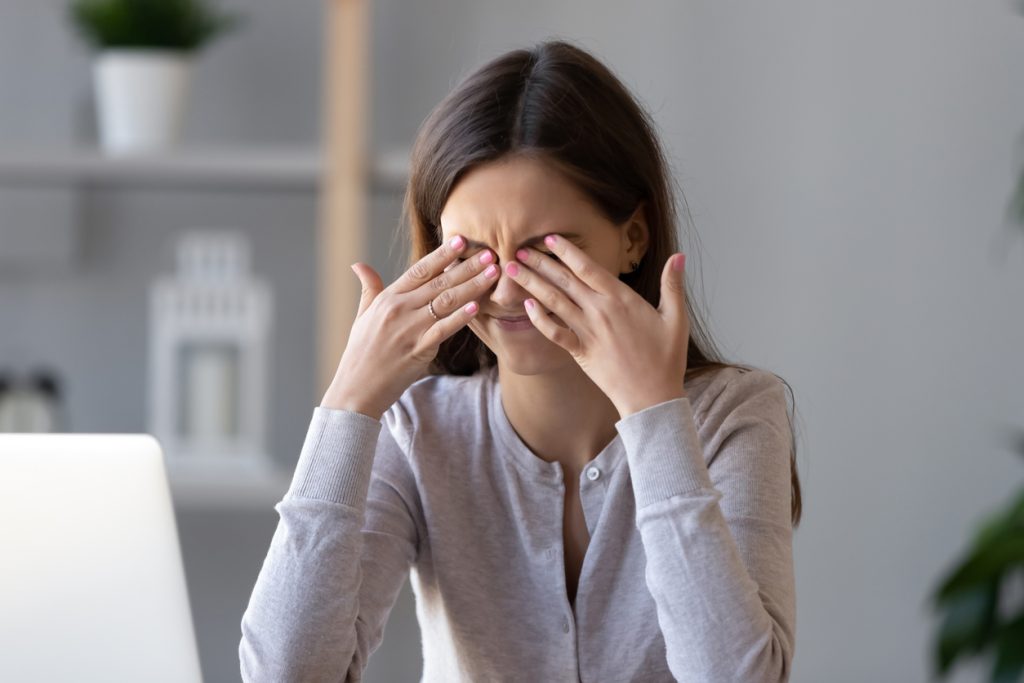Every person experiences headaches at least once in a while however, the pain that you experience behind your eyes could affect your life. If you experience the condition frequently or daily the frequency could indicate the presence of something else more significant.
If your headaches have forced you to modify your daily routine, you should consult your doctor. Your primary physician will evaluate your situation and suggest treatments based on your migraine triggers and symptoms and the location of pain.
What Is a Headache Behind the Eyes?
Eye strain may be accompanied by other signs. It could be the indication for a migraine cluster tension headaches, or sinus headaches that return in the event of sinus issues or allergies.
If you’re feeling anxious or stressed The symptoms of headaches may arise. Certain may disappear by using a prescription painkiller but other headaches, like migraines may get too bad for you go on working or spending time with yourself. A pattern of frequent problems like these could be a sign of an even more serious condition and it is recommended to consult the doctor.
What Causes a Headache Behind the Eyes?
Eye headaches may have a variety of causes and it may require some trial and error to know what causes it. To pinpoint the cause of your headache, you need to first look at the kind of pain you experience.
Migraine:
The most common migraine headache causes severe pain behind your eyes. If you are suffering from migraines your triggers may differ from those of a person who suffers from migraines too. For a lot of people, migraines can be caused by anxiety or stress hormonal changes bad posture or eating habits, medication as well as external stimuli. They are often accompanied by fatigue, nausea, a feeling of weakness in the head, as well as mood swings.
Tension headaches:
You may feel tension headaches following an exhausting day of driving or looking at a computer screen, or any other activity that requires constant, sharp concentration. People often notice these kinds of headaches during days with cold temperatures. They may be accompanied by tension in the neck or head.
Cluster headaches:
Cluster headaches can be experienced throughout the cycle they occur in cycles, and men experience these more frequently than women do. Although they are quite widespread, doctors do not know why they occur apart from the possibility of genetic causes. A lot of people with them experience intense pain.

Sinus headaches:
This type of headache occurs most frequently in allergy seasons, or at other occasions in the event that there is a experience the symptoms of an allergy flare-up. The symptoms are similar to the symptoms associated from migraines or cluster headaches which is why a lot of people think that they are suffering from migraines or cluster headaches as sinus headaches.
What Are the Symptoms of Headaches Behind the Eyes?
The signs and symptoms associated with headaches that affect your eyes can differ depending on the type that you experience. In the same way, when you may suffer from migraines or tension headache the symptoms may differ.
Similar types of pain can are associated with a variety of headaches. This can make it difficult for doctors to determine the cause without a detailed understanding of your lifestyle. To determine which type of headache you experience take note of specific symptoms for each.
Migraines extend beyond headache pain and may cause the sensitivity to sound or light nausea, a weakening of the muscles or mood swings, and even an aura prior to when the headache starts. The headaches typically occur in one part of your head.
Tension headaches may happen at any time or over a period of time and at that point, your doctor will determine if they are chronic headaches. Apart from the eye pain You may experience tension in your head as well as head tenderness and forehead pressure.
Cluster headaches, similar to migraines, are characterized by a tendency to occur on the opposite facet of your head, and cause severe pain. You may also feel shivering or flushed, experience tears or red eyes and experience congestion or a nasal discharge.
Sinus headaches can cause pain wherever the sinuses reach which includes your nose, eyes cheeks, forehead and even your teeth. They are usually accompanied by allergy symptoms such as nasal discharge, congestion and sometimes fever. When you experience sinus pain, it is possible that you may be able to notice that the pain is getting worse throughout the day.
What Are the Risk Factors of a Headache Behind the Eyes?
Headache pain is often associated with other issues, regardless of regardless of whether you suffer from an existing condition or lifestyle aspects you could alter to reduce discomfort. Eye problems and thyroid issues like glaucoma may increase the risk of suffering from pain in the eyes.
It is possible that you may be able to experience more headaches if you suffer from allergies and sinusitis since they impact the area that surrounds your eyes. In the event that you work in a workplace then it is possible that you may be able to experience more headaches due to watching computer screens.
Refraining from treatment for headaches could lead to the condition getting worse or worsening until it becomes chronic. The frequent headaches could also indicate an untreated autoimmune disease such as scleritis.

How Do You Prevent Headaches Behind the Eyes?
Avoiding headache pain requires being alert to your triggers. If you suffer from chronic or autoimmune illness seek treatment to lessen the amount of days with pain you experience. If you experience eye pain due to lifestyle issues, you can make modifications such as:
- Avoid or limit coffee, alcohol as well as processed food items
- Stop smoking
- Exercise
- Relax and unwind.
- Pause regularly from your phone, computer and other screens.
- Avoid headache triggers you know about.
If you suffer from a variety of kinds of headaches for instance that the fact that you experience as well cluster headaches as well as tension headaches you may require experimenting to determine which practices can help you.
How Do You Diagnose the Type of Headache?
If you frequently experience eye pain it is recommended that you seek advice from a medical doctor. There is no test specific to determine the type of headache you are suffering from. Instead the doctor will determine the cause by the location of the pain and intensity, as well as possible reasons. They may also conduct tests to determine if there are any other conditions that may be causing the pain.
To determine the cause of your headache To diagnose your headaches, your doctor will be looking for patterns. They will inquire regarding your symptoms and attempt to identify them with tension headaches, migraines, sinus headaches. They’ll conduct a physical examination to assess your coordination, vision, senses and reflexes.
Conclusion
If your primary health care doctor isn’t convinced they are able to provide a specific diagnosis or treatment plan, they may recommend you to neurologists.
Eye pain may cause a myriad of signs. The majority of them can be treated with rest or medication however some individuals require additional treatment.
Although determining the root of the headache may be an obstacle, it is important to seek out your doctor when you experience persistent or severe pain.








